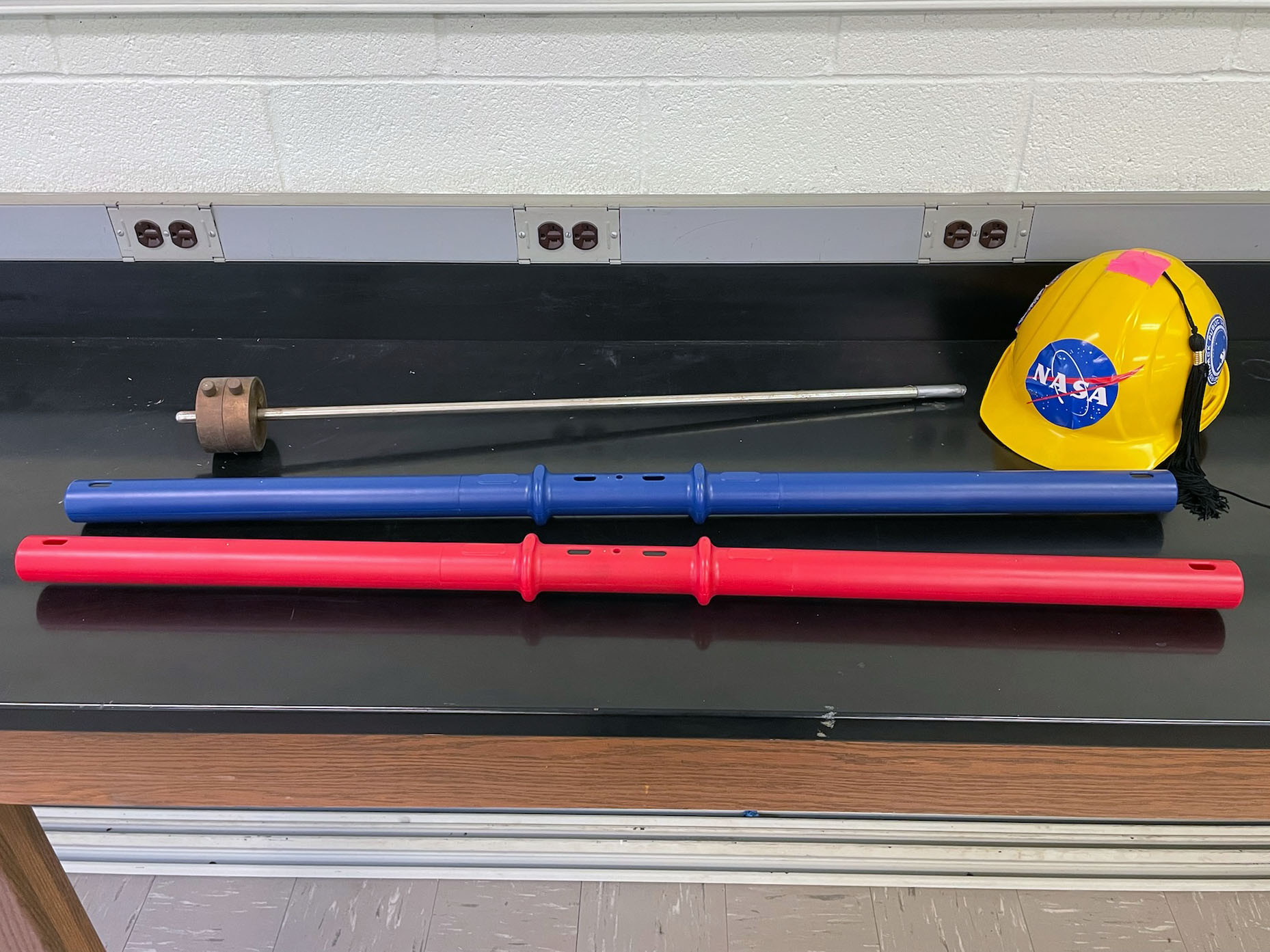- Computers are NOT needed for lab this week
- Calculate torque exerted on a equal-arm balance. Also play with two inertia wands, as well as a rod with mass on one end, and qualitatively explain the motion of each in terms of the moment of inertia
- I have completely rewritten Part II, the calculation of torque (Fall 2018). They just didn't get it before. I'm not holding my breath… (Update - Fall 2019: I think it did help!)
- Common misconception: Students know that r and θ increase as you move from loop 1R to 3R, but they then say that the torque is also increasing! They miss the point that the force decreases to obtain the same torque as the mass produces on the left side! I've added an extra prediction question that will hopefully address this. Still not holding my breath…
- When measuring the lengths on the equal-arm balance, students should measure lengths to 0.1 cm, calculate angles to 0.1°, and calculate torque with 3 sig figs
- The measurement of 'h' in the sketch is from the center of the brass pivot to the center of loop zero. It will be easier to make these measurements when the equal-arm balance has been removed from the clamp
- Fall 2023: I had wondered if it's better to measure h and r to the center of each loop or to the point on the loop where the mass hangar makes contact. I created this spreadsheet comparing both measurements, and it does not matter: as long as the measurements are done carefully and consistently you will get excellent results. Therefore, I have changed the directions to measure to the contact point, since they can generally do that more precisely than estimating the center of the loop
- The sketch shows that there is a large hole on the plastic arm between the pivot and loop zero. I've also added labels to each arm indicating that this is not a measurement point. Be sure to point this out to students (and yes, people have done this in the past, and will continue to do so despite my best efforts. *sigh*)
- Here are the solutions, containing my measurements and calculations
- The mass set used here is the same as that used for the Vector Addition experiment. Be sure to again tell students to put back the masses in their proper containers
- Again remind students that the hangers have a mass of 50-g, which must be included in their calculations!
- Suggest to students that they stand back from the apparatus when estimating if it's level. I found that standing on the opposite side of the the bench makes it much easier
- Problem: I found (Fall 2018) that the mass amounts are questionable! In the future, I will check all masses and remove those that deviate significantly from their stamped value (yes, it made a significant difference for some students).
- A full stack of masses should be 250.0-g, but I found that they averaged around 250.7±0.1-g
- Smaller masses (1-g and 2-g) are included this time to allow students to fine tune the balance, if needed
- Problem: Being able to tell when the arm is balanced and level. Can't touch the arm with a bubble level without disturbing it
- Balancing/rotation rods (photo at right):

- These rods will be placed on the side bench. They used to be placed at the front near the board, but in Fall 2015 they were carted away as trash. Unh…
- The metal rod with brass weights is very heavy (2.6 kg = 5.7 lbs). Warn students to be careful while balancing not to bash themselves or their partners in the face with the rod. A hard hat will be available for their use.
- Make sure that they don't cup their hand around the weights when they are located closer to their hand
- Yeah, some will actually think that it's easier to balance with the weights closer to their hand then farther away. Many have never tried balancing a baseball bat or tennis racket before
- The red and blue inertia rods should be used one at a time, in the same hand: we've had students claim they couldn't tell the difference when they use the harder-to-rotate rod in their dominant hand. *sigh*
- Red inertia wand
- Masses near center hand grip - easier to rotate
- Blue inertia wand
- Masses near ends, further from hand grip - harder to rotate
- If a student doesn't believe that both rods are of the same mass, bring out an electronic balance (the one that reads to whole g, not 0.1 g). There is a slight difference in mass which shouldn't be emphasized. Both rods have a mass of 1108 g
|
